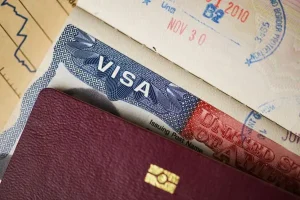Announcements
Are you worried about how inflation-adjusted savings strategies might impact your financial future?
With prices continuously rising, it’s crucial to find effective methods to protect your hard-earned savings.
This article will delve into essential techniques to adjust your savings in line with inflation, ensuring you maintain your purchasing power and meet your financial goals.
Announcements
Understanding Inflation and Its Impact on Savings
Inflation is the increase in prices over time, which means that the money you have today will buy less in the future. This affects everyone, especially when it comes to saving money. If your savings do not grow at a rate that keeps up with inflation, you will lose purchasing power.
For example, if you have $100 saved, and inflation rises by 3% this year, you will need $103 next year to buy the same items.
Announcements
Understanding how inflation impacts savings is key to planning for your future. If interest rates on your savings accounts are lower than the inflation rate, your money is effectively shrinking. By knowing this information, you can make better decisions about where to keep your funds, ensuring they grow at a pace that keeps your financial goals on track.
Inflation-adjusted savings strategies help you combat the effects of inflation. By investing in options that typically outpace inflation, such as stocks or inflation-protected securities, you can protect your savings. The goal is to make sure that when you do need to access your money in the future, it retains its value and can still help meet your needs.
Key Inflation-Adjusted Savings Strategies
One key inflation-adjusted savings strategy is to put your money in accounts that offer interest rates above the inflation rate. High-yield savings accounts and certificates of deposit (CDs) can be a great help in this area. These accounts allow your money to grow, giving you a better chance to keep up with rising prices. Make sure to compare options to find the best rates available.
Another effective strategy is to consider investing in stocks or mutual funds. While these come with some risk, historically, the stock market has offered returns that outpace inflation over the long term. This means that investing can help you grow your savings faster than inflation can eat away at them, making it a great option for your financial future.
Lastly, think about inflation-protected securities, such as Treasury Inflation-Protected Securities (TIPS). These are government bonds designed to shield your savings from inflation. Their principal value increases with inflation, which means your investment grows when prices rise. Including these in your savings strategy can help ensure your money retains its value.
Top Tools for Tracking Inflation
![]()
One of the best tools for tracking inflation is the Consumer Price Index (CPI). The CPI measures how much prices for goods and services change over time. By checking the CPI regularly, you can see how inflation affects everyday items, such as food and gas. This helps you understand how much more money you might need in the future to maintain the same lifestyle.
Another helpful tool is the Bureau of Labor Statistics (BLS) website, which provides up-to-date information on inflation rates. The BLS publishes reports and statistics that explain inflation trends and forecasts. By using this resource, you can stay informed about how inflation might impact your savings and financial plans over the years.
You can also use budgeting apps and financial software that include inflation trackers. Many of these tools allow you to set alerts for when inflation reaches certain levels. This way, you can take action to adjust your savings strategy if needed. Using technology can make it easier to keep a watchful eye on inflation and help you protect your financial future.
Investing for Inflation Protection
Investing for inflation protection is essential to maintaining your purchasing power over time. One effective way to do this is by purchasing stocks in companies that typically grow with inflation.
These companies often have strong earnings that rise when prices increase, helping protect your investments from losing value. Consider focusing on industries like energy or consumer goods, which tend to perform well during inflationary periods.
An alternative investment option is real estate. Property values and rental income generally rise with inflation, making real estate a solid choice for securing your financial future. By investing in real estate, you can enjoy the benefits of rising prices while also having a physical asset that can appreciate over time.
Finally, consider adding inflation-protected securities to your portfolio, such as Treasury Inflation-Protected Securities (TIPS). These bonds are specifically designed to guard against inflation. As inflation rises, the value of TIPS increases, ensuring your investment maintains its purchasing power.
This strategy can be an effective way to balance your investment portfolio amid changing economic conditions.
Building an Emergency Fund that Keeps Pace with Inflation
Building an emergency fund that keeps pace with inflation is crucial for your financial health. Start by setting a savings goal that covers at least three to six months’ worth of living expenses. This will ensure you have enough money to cover unexpected costs, like medical bills or car repairs.
To make sure your fund grows, regularly contribute to it and watch how inflation can impact the purchasing power of your savings over time.
To keep your emergency fund effective, place the money in a high-yield savings account or a money market account. These accounts typically offer better interest rates than regular savings accounts, helping your fund grow faster. This way, the interest earned can help counteract inflation’s effects and ensure you can still cover costs when you need to access your emergency savings.
Additionally, consider investing a small portion of your emergency fund in inflation-protected securities or liquid assets that may provide better returns. While you should keep the majority in safe and accessible accounts, a small investment can help your emergency fund stay relevant as prices rise.
This approach adds a layer of protection, making sure your savings effectively meet your needs in challenging times.
Smart Budgeting to Support Inflation-Adjusted Savings Strategies
Effective budgeting is a foundational step in applying inflation-adjusted savings strategies. By tracking your income and expenses, you gain control over your finances and can identify areas where you can cut costs or reallocate funds to savings. This allows you to be more intentional about growing your money in ways that outpace inflation.
Start by reviewing your current budget and identifying fixed and variable expenses. Look for subscriptions or services you no longer use, and redirect those funds into high-yield savings accounts or investment options aligned with inflation. The more efficiently you manage your monthly budget, the more you can contribute to savings that grow over time.
In addition, consider using budgeting tools and apps that adjust for inflation. These platforms can help you set goals, forecast future expenses, and track your progress. With smart budgeting, you’ll be better equipped to protect your financial future and ensure your money retains its value, even in an unpredictable economy.






